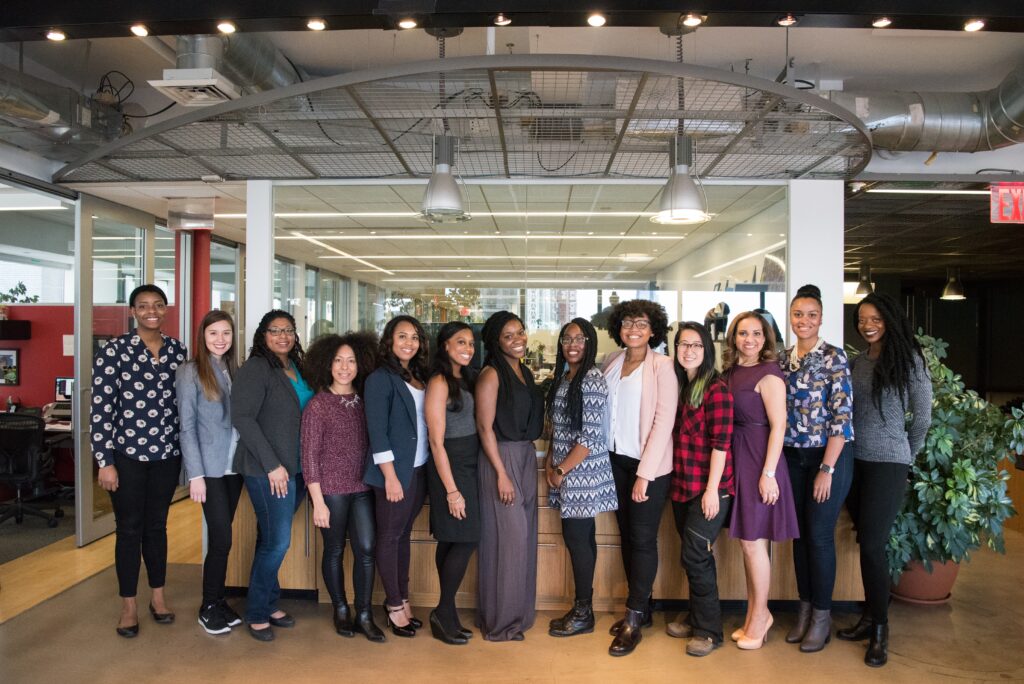Employee Resource Groups (ERGs) have become increasingly popular in organizations worldwide to promote diversity, inclusion, and employee engagement. ERGs offer a wealth of benefits, from networking and professional development opportunities to enhanced communication between colleagues and fostering a sense of belonging within the workplace. In this article, we’ll dive into the different types of Employee Resource Groups (ERGs), understand their unique features, and explore how mentoring programs can support and empower these groups. Let’s get started!
Understanding ERGs: A Guide to Different Types
ERGs are employee-led groups that are typically formed around shared characteristics such as race, ethnicity, gender, sexual orientation, or even interests and hobbies. While there are many different types of ERGs, the most common categories can be divided into diversity-based ERGs, affinity groups, and cross-functional ERGs. Let’s explore each of these categories in more detail.
Differentiating between Types of Employee Resource Groups (ERGs)
Diversity-based ERGs primarily focus on providing support, resources, and networking opportunities for members of a specific demographic group, such as women, persons of color, LGBTQ+ individuals, or veterans. The purpose of these ERGs is to create a more inclusive work environment by addressing the unique challenges faced by their members and advocating for their needs and concerns.
For example, a women’s ERG might focus on promoting gender equity in the workplace by advocating for more leadership opportunities and pathways for women. Similarly, a veterans’ ERG might work to support employees who have served in the military by providing resources for their transition back to civilian life and promoting awareness of the unique challenges faced by veterans in the workplace.
Affinity groups, on the other hand, are ERGs that bring together employees with a shared interest or background. This could include hobbies, cultural interests, or professional development goals. Affinity groups often work on projects or initiatives related to their shared interests, creating a sense of camaraderie and collaboration within the organization.
For example, an ERG focused on environmental sustainability might bring together employees who are passionate about reducing the organization’s carbon footprint. These employees might work together to implement recycling programs, reduce energy consumption, or promote sustainable commuting options.
Cross-functional ERGs bring together employees from different departments, teams, or job functions with a common purpose or goal. These groups provide a valuable platform for sharing knowledge, ideas, and best practices while promoting collaboration and innovation across the organization.
For example, a cross-functional ERG might be formed to address a specific business challenge, such as improving customer satisfaction or streamlining internal processes. This ERG might bring together employees from different departments, such as customer service, marketing, and operations, to work together and share their expertise in order to find a solution to the challenge.
A Comprehensive Look at Diversity and Inclusion ERGs
Diversity and inclusion ERGs focus on promoting a culture of respect, inclusiveness, and equal opportunities within the workplace. These groups aim to reduce barriers and improve the work experience for members of underrepresented or marginalized groups, making it easier for people from all backgrounds to succeed in their careers.
Some examples of diversity and inclusion ERGs include those centered around gender, race, or ethnicity, as well as LGBTQ+ and disability-focused groups. These ERGs play a critical role in identifying and addressing potential biases, fostering open dialogue around sensitive topics, and creating opportunities for education, awareness, and cultural exchange within the organization.
For example, a disability-focused ERG might work to promote accessibility and accommodations for employees with disabilities, while also raising awareness of the unique challenges faced by people with all kinds of abilities in the workplace. Similarly, an LGBTQ+ ERG might focus on promoting diversity and inclusion for LGBTQ+ employees, while also advocating for policies and practices that support LGBTQ+ rights and equality and cultivating a workplace of belonging.
The Role of Affinity Groups in ERGs
Affinity groups provide a relaxed and informal environment in which employees can connect with colleagues who share their interests, backgrounds, or passions. By facilitating social connections and fostering a sense of belonging, affinity groups can help to reduce feelings of isolation and increase overall employee satisfaction and engagement.
Examples of affinity groups may include social clubs based on common hobbies, such as photography or sports, employee groups dedicated to personal and professional growth, or even groups that focus on a specific language or cultural background. These ERGs can provide a valuable opportunity for employees to learn from one another, share resources, and collaborate on projects or initiatives aligned with their shared interests.
For example, an ERG focused on personal and professional growth might bring together employees who are interested in developing their leadership skills, building their networks, or pursuing advanced degrees or certifications. These employees might work together to share resources, provide mentorship and support, and develop initiatives that promote growth and development within the organization.
Understanding Cross-Functional ERGs
Cross-functional ERGs promote collaboration and innovation across different departments, roles, and areas of expertise. These groups typically bring together employees to tackle a shared challenge or work toward a common goal, such as improving efficiency, fostering a culture of innovation, or promoting sustainability within the organization.
By breaking down silos and facilitating open communication between teams, cross-functional ERGs can help employees develop new skills, gain exposure to different job roles, and broaden their professional networks. This multidisciplinary approach to problem-solving can also generate new ideas, increase organizational agility, and drive long-term success.
For example, a cross-functional ERG focused on innovation might bring together employees from different departments, such as product development, marketing, and customer service, to work together on developing new products or services. By sharing their expertise and collaborating on new ideas, these employees might be able to develop innovative solutions that drive growth and success for the organization.

What is the Difference Between a BRG and ERG?
Business Resource Groups (BRGs) and Employee Resource Groups (ERGs) are both important components of a company’s diversity, equity, and inclusion (DEI) strategy. While they share some similarities, there are also distinct differences between the two.
ERGs are typically employee-led groups that focus on creating a sense of community and support for employees who share a common identity or interest. For example, an ERG might be formed around a shared identity such as race, gender, or sexual orientation, or around a shared interest such as sustainability or wellness.
ERGs often provide a space for employees to connect with others who share similar experiences and to advocate for changes within the company that support diversity and inclusion.
BRGs, on the other hand, are focused on aligning their goals and initiatives with the overall business strategy and objectives of the organization.
BRGs may be formed around a specific business function, such as marketing or product development, or around a specific customer segment, such as women or LGBTQ+ individuals. By leveraging the diverse perspectives and experiences of their members, BRGs can help to identify new business opportunities, drive innovation, and contribute to the organization’s bottom line.
For example, a BRG focused on talent acquisition and retention might work to develop strategies for attracting and retaining diverse talent, such as implementing unconscious bias training for hiring managers or creating mentorship programs for underrepresented employees. A BRG focused on product development might provide insights into the needs and preferences of diverse customer segments, helping the company to develop products that better meet the needs of all customers.
Overall, both ERGs and BRGs play important roles in creating a more diverse, inclusive, and innovative workplace. By providing employees with spaces to connect, advocate, and contribute to the organization’s success, these groups help to create a more engaged and empowered workforce.
How Mentoring Programs Support a Variety of ERGs
Mentoring programs have become increasingly popular in recent years as a way to support and empower employees. These programs provide a structured and supportive framework for employees to learn from experienced colleagues, develop new skills, and build their professional networks. Mentorship can be especially valuable for members of underrepresented groups who may face unique challenges or barriers in the workplace.
One way that organizations can tailor mentoring opportunities is by offering specific programs for ERGs. ERGs, or Employee Resource Groups, are groups of employees who share a common identity, background, or interest. By offering tailored mentoring opportunities for specific ERGs, organizations can ensure that the needs and goals of each group are addressed.
For example, an organization might pair individuals with mentors from a similar background, such as pairing women with female mentors or people of color with mentors who share their cultural identity. This can help to create a sense of community and support within the ERG, as well as provide valuable insights and advice from someone who has faced similar challenges.
Another approach to tailored mentoring is to match mentors and mentees with similar interests. For example, an ERG for employees interested in sustainability might pair individuals with mentors who have experience in sustainable business practices. This can help to create a more focused and targeted mentoring experience and ensure that mentees are learning from someone with relevant expertise.
In addition to tailored mentoring opportunities, organizations can also provide resources and support for cross-functional collaboration and learning. This might include hosting networking events or workshops that bring together members of different ERGs to share ideas and best practices. By fostering connections between employees and promoting personal and professional growth, mentoring programs can contribute to the overall success and impact of ERGs within the organization.
How Individuals are Changing Their Organizations for the Greater Good
iGrow is a grassroots initiative created by employees, for employees at Philip Morris International. It started in 2020 in Neuchatel, a small town in Switzerland, with only a handful of local participants. Flash forward two years later, and the mentoring program has expanded around the world, to a truly international, global mentoring program.
It is one of the first mentoring programs of this nature – entirely led by a group of volunteers.
The idea was born out of the desire to connect and break down barriers by expanding professional networks across a company of more than 70,000 employees. Since its inception, iGrow has been ultra-agile, quickly adapting by switching to a fully virtual program during the pandemic. The momentum quadrupled in size with the need for authentic relationships increasing around the world as people were locked inside their homes.
Read more about how PMI has cultivated such an impactful, employee-led mentoring program and was one the 14 recipients of the 2022 Mentorloop Impact Awards.
Mentoring programs can be a powerful tool for supporting and empowering ERGs. By tailoring mentoring opportunities to the needs and goals of specific ERGs, organizations can create a more inclusive and supportive workplace. By fostering connections between employees and promoting personal and professional growth, mentoring programs can contribute to the overall success and impact of ERGs within the organization. So, it is important for organizations to understand the different types of ERGs to maximize their benefits and drive positive changes within the workplace – discover more on the best practices of Employee Resource Groups or get started on Building your own Mentoring Program today!




